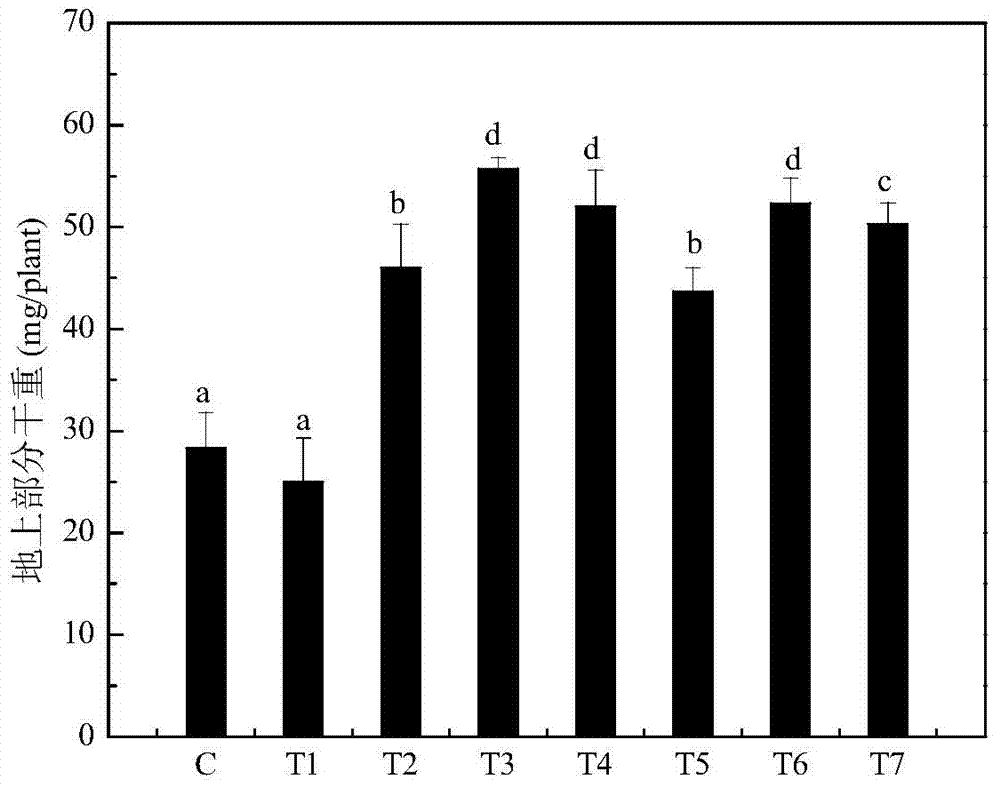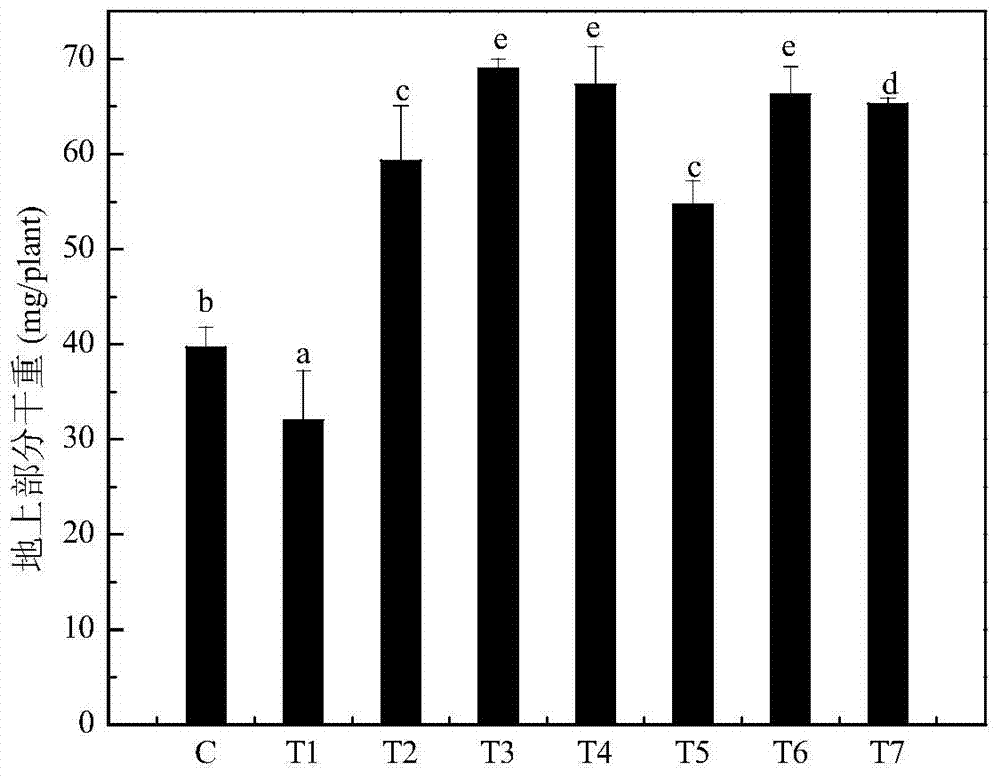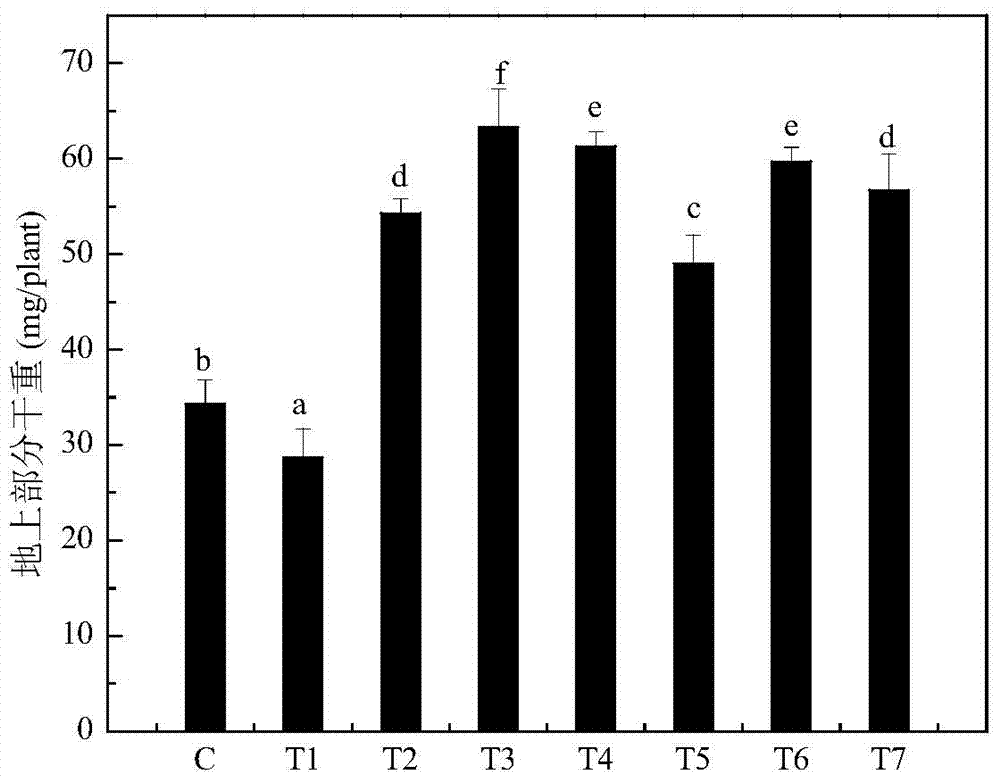Reinforced restoration method for lead-polluted soil by combining diethyl aminoethyl hexanoate and ethylenediamine tetraacetic acid (EDTA)
A technology for ethylenediaminetetraacetic acid and lead-contaminated soil is applied in the direction of restoration of polluted soil, etc., to achieve the effects of increasing biomass, improving restoration effect, and improving biological effectiveness
- Summary
- Abstract
- Description
- Claims
- Application Information
AI Technical Summary
Problems solved by technology
Method used
Image
Examples
Embodiment 1
[0037] The experimental site was set in the greenhouse of the School of Environment, Zhejiang Gongshang University. The soil for potting experiments was collected from a farmland in the outskirts of Hangzhou, and the soil type was clay. The concentration of lead in all treatments is 750mg / kg (the concentration is the concentration of lead in the soil when planting ryegrass), and the test soil is sieved with a 5mm sieve, and the pots are packed, and each pot is 18.5cm (diameter) × 21cm (high) with 2kg of soil ( dry weight), place a tray under the basin.
[0038] Pb as Pb(NO 3 ) 2 Add the soil in the form of an aqueous solution, mix well, add water to 75% of the field water holding capacity, and use it for the test after being stable in the greenhouse for 30 days. 250 ryegrass plants are planted in each pot.
[0039] In this embodiment, 8 treatments were set up, respectively: no addition of EDTA and DA-6 (C), addition of 2.5mM EDTA (T1), leaf spraying of 1 μM DA-6 (T2), leaf s...
Embodiment 2
[0054] The experimental site was set in the greenhouse of the School of Environment, Zhejiang Gongshang University. The soil for potting experiments was collected from a farmland in the outskirts of Hangzhou, and the soil type was clay. The lead concentration in all treatments was 250 mg / kg (this concentration is the lead concentration in the soil where ryegrass was grown).
[0055] Put the test soil into pots after passing through a 5mm sieve. Each pot is 18.5cm (diameter) × 21cm (height) and filled with 2kg (dry weight) of soil, and a tray is placed under the pot. Pb as Pb(NO 3 ) 2 Add the soil in the form of an aqueous solution, mix well, add water to 75% of the field water holding capacity, and use it for the test after being stable in the greenhouse for 30 days. 250 ryegrass plants are planted in each pot.
[0056] A total of 8 treatments were set up in the experiment, namely: no addition of EDTA and DA-6 (C), addition of 2.5 mM EDTA (T1), leaf spraying of 1 μM DA-6 (T2...
Embodiment 3
[0071]The experimental site was set in the greenhouse of the School of Environment, Zhejiang Gongshang University. The soil for potting experiments was collected from a farmland in the outskirts of Hangzhou, and the soil type was clay. The lead concentration in all treatments was 500 mg / kg (this concentration is the lead concentration in the soil where ryegrass was grown).
[0072] Put the test soil into pots after passing through a 5mm sieve. Each pot is 18.5cm (diameter) × 21cm (height) and filled with 2kg (dry weight) of soil, and a tray is placed under the pot. Pb as Pb(NO 3 ) 2 Add the soil in the form of an aqueous solution, mix well, add water to 75% of the field water holding capacity, and use it for the test after being stable in the greenhouse for 30 days. 250 ryegrass plants are planted in each pot.
[0073] A total of 8 treatments were set up in the experiment, namely: no addition of EDTA and DA-6 (C), addition of 2.5 mM EDTA (T1), leaf spraying of 1 μM DA-6 (T2)...
PUM
 Login to View More
Login to View More Abstract
Description
Claims
Application Information
 Login to View More
Login to View More - R&D
- Intellectual Property
- Life Sciences
- Materials
- Tech Scout
- Unparalleled Data Quality
- Higher Quality Content
- 60% Fewer Hallucinations
Browse by: Latest US Patents, China's latest patents, Technical Efficacy Thesaurus, Application Domain, Technology Topic, Popular Technical Reports.
© 2025 PatSnap. All rights reserved.Legal|Privacy policy|Modern Slavery Act Transparency Statement|Sitemap|About US| Contact US: help@patsnap.com



